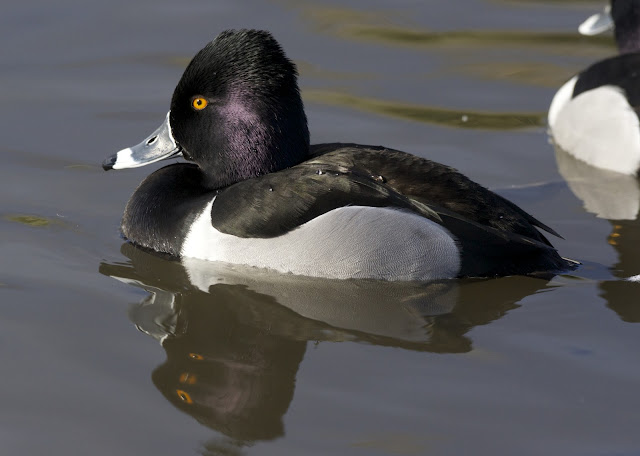It's that dreaded final month...people in curious clothes are rushing all over at absurd times of day to fill out their lists before it's too late. No no, it's not holiday shopping season (ok, that too). It's December, and all the Year listers are scrambling to boost their numbers before 2013 is expired. Whether it's another surprise chase or finally catching that elusive annual, birders are kicking it into high gear as the weather cools down and the sun hesitates more and more to rise. With so much going on at work and elsewhere, I'm afraid I've thrown in the towel for big chases in 2013 or trying to actively grow a bigger Year list. There have been plenty of great sightings this year and I have no complaints. In fact, just birding the local dives around Phoenix the other evening was all the more rewarding. It was calm; there was no requisite consideration of time or gas money. It's always good to get back to some seasonal basics every once in a while, especially before a new birding year begins...
The Papago Park ponds are now well-stocked with their predictable winterfowl, as are the other bodies of water around Phoenix. The birds are fairly acclimated to people and they're right out in the open. After many chases and photo-attempts on rare and skittish birds in hard-to-reach places, birding around town feels shockingly and sinfully easy. Of course, it doesn't award one many points on the Global Birder Ranking System, not like turning up a gorgeous Fork-tailed Flycatcher in Connecticut does, but these simple stops come with their own reward.
Instead of stopping to smell the roses, stop to wink at the Wigeons (don't bother smelling the Wigeons, it's uncomfortable for all involved). Pause and ponder their nice nose-whistling sounds and their awkwardly wide proportions.
Seriously, look at how wide and stable of a platform this duck is. You could play jenga on its back no problem. It's like the aircraft carrier of waterfowl.

It's been said a thousand times before, but the Ring-necked Duck, a very decent duck, is probably the worst-named bird in North America. Yeah yeah there's a ring on the neck, but it sure isn't a Ring-necked Pheasant. If we're going with the ring motif, maybe mention that it's the only North American duck with a (very prominent) ring on its beak? I mean, Mallards have ring-necks too...
Anyway, it's always a treat when these guys return en masse. I never get tired of photographing them. They're the perfect combination of accommodating but also difficult to properly and angularly expose. I think I nailed this gentleman though, if I do say so myself.
The females are a'ight, but even less noticeably ring-necked (still ring-billed though, er hem...).
And of course the backbone of every avian painter, except for Painted Redstarts, is the Canvasback. Last year there was a cooperative male at Papago. At first he was very skittish, but after a few weeks at the ponds he became more accustomed to the foot-traffic and I was able to get satisfactory shots. I'm hoping he returns this year to find a pretty, demure lady a-waiting for him.

Green Herons are one of those very cool, common birds that I never stop to appreciate anymore unless I'm otherwise making myself stop and appreciate such stuff--like wintering ducks. As soon as I see one hunting again, up close and without also wondering how much time I have to get to the next site, I'm reminded, "Wow, what a gorgeous bird. Where in the world do they put that neck!?"
Even with the purdy ducks now arriving, the Green Heron will likely stay the most colorful overall bird at the Papago Ponds, or if not then at least the coolest.
And sometimes the most goofy.
I'll be getting back out into the desert this weekend after some Sagebrush and Bell's Sparrows, as well as any Thrashers that have arrived. Hoo knows, maybe even a Snowy Owl will turn up (ok, probably substantially farther north).

















